Real estate symposium charts solutions for downtown Seattle’s comeback
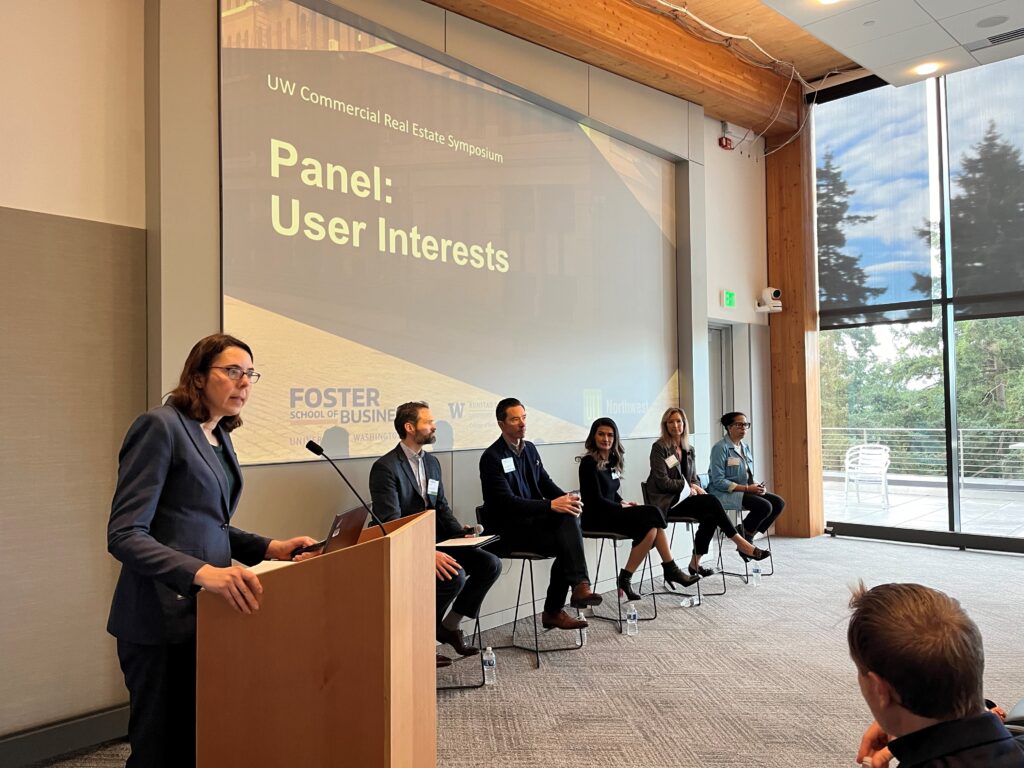
Professor Tracey Seslen introduces an expert panel
The UW Foster School of Business Founder’s Hall hosted a UW Real Estate Symposium on “Solutions for Downtown’s Comeback,” on Feb. 14 in which city officials, leading developers, business owners, and Foster faculty and students gathered to discuss the challenges and opportunities for downtown Seattle. The event was co-sponsored with ULI Northwest.
Egon Terplan, a Senior Fellow at the Brookings Institute, delivered an informative and engaging keynote speech in which he placed the problems facing downtown in historical context, explained the root causes, and explored potential remedies.
“Ultimately, downtowns and great cities are places for people,” Terplan said, including everyone from office workers to the unhoused. “No matter what we come up with today, it comes back to the people.”
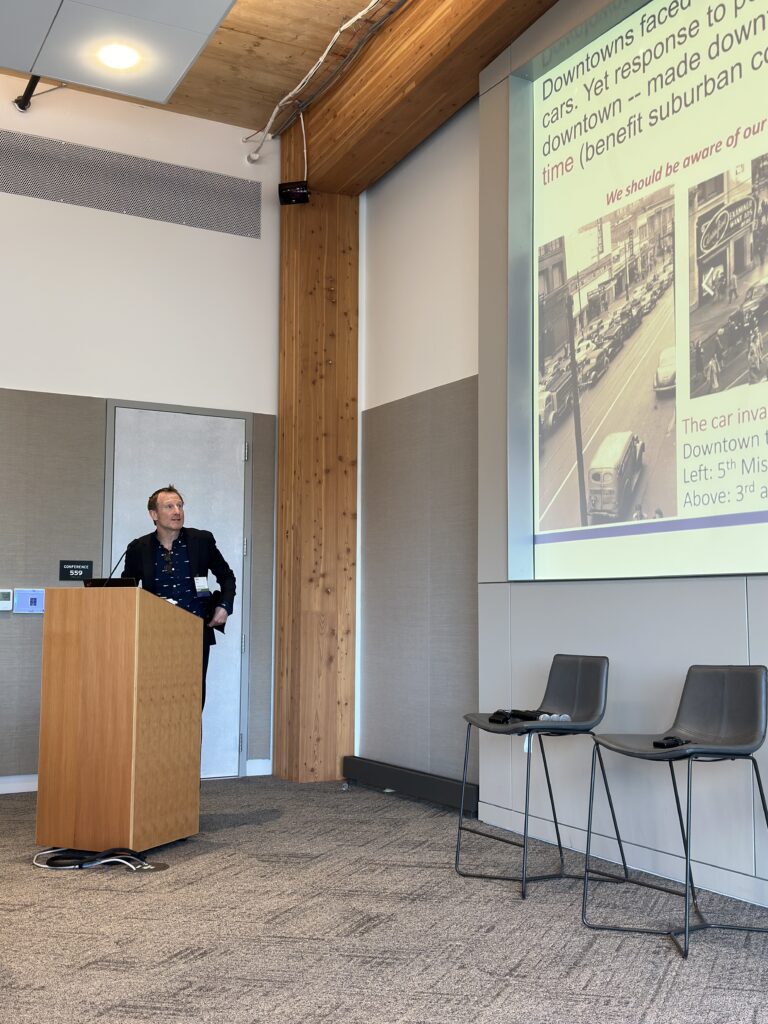
Egon Terplan
Terplan’s analysis of the state of Seattle’s downtown included several key considerations. The picture of Seattle’s recovery differs dramatically based on what boundaries are included. Using one definition and study, pedestrian activity in downtown Seattle is 75% recovered; in another study that uses different boundaries, it is 57% recovered and among the worst performing downtowns.
Terplan also noted that Seattle is a hub for technology jobs which can successfully be done by remote workers. Cities in which entertainment or health care are leading industries are seeing more workers return to their downtown workplaces as a matter of necessity absent for roles at software companies.
“It’s a good news/bad news situation for Seattle,” he said. “The office sector used to be an expression of the strength of your economy, and now it is not.”
Terplan said that for an urban core to thrive in today’s environment, we need to be thinking beyond the traditional office buildings housing a full-time workforce in cubicles.
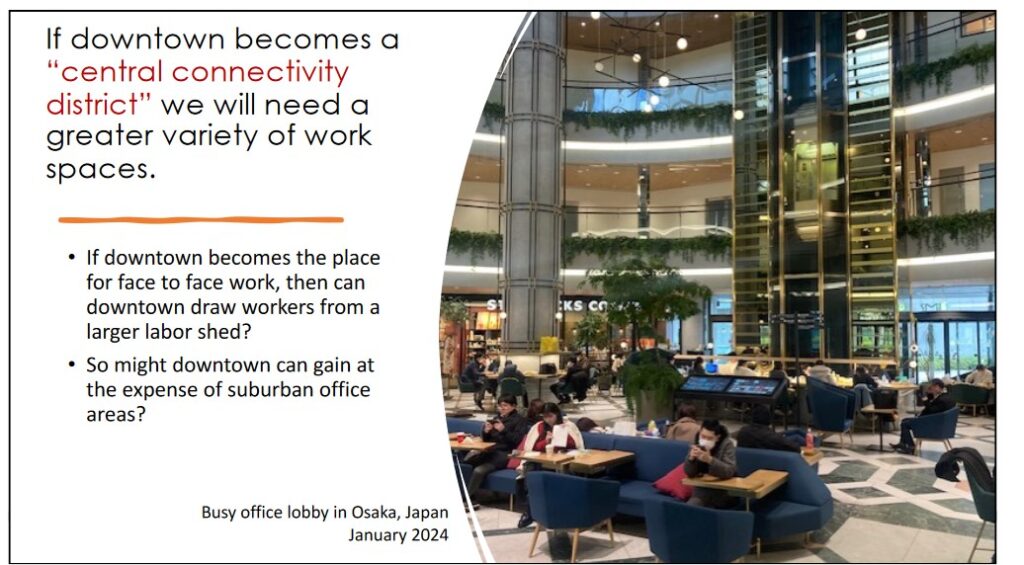
A slide from Terplan’s keynote
He cited examples of other cities, including Osaka, Japan, in which downtown buildings leverage their convenient location and sweeping views to attract patrons to bars and restaurants.
Terplan spoke to some myths around downtown renewals. Some conservative media outlets have painted West Coast cities as lawless wastelands. In reality, San Francisco and Seattle both have lively downtown areas despite an increase in homelessness. And while converting empty office buildings to housing is an appealing concept, retrofitting buildings for residential use can be prohibitively expensive. He also explained the pandemic was an accelerant to social changes impacting downtowns that were already well underway.
“The seeds of the issues we are talking about today existed pre-Covid,” Terplan said. “Certainly, they have accelerated with the pandemic. But a reduction in transit ridership, online shopping’s impact on brick-and-mortar retail, and a lack of affordable housing – that was all there before.”
Terplan looked to the past – and the future – to provide some optimism. “Downtowns are extremely resilient. We often forget that most of our downtowns in the United States, including Seattle, all suffered major fires. And they rebuilt.”
Looking ahead, Terplan cited the need for carbon reduction as a major advantage for downtown corridors. “You can get downtown without driving,” he pointed out. Seattle has a huge fleet of buses and trains equipped to transport thousands of people a day downtown, and transit infrastructure is extremely difficult to replicate.
Terplan was introduced by Foster Associate Teaching Professor Tracey Seslen, who set the stage with a candid assessment of the situation that necessitated the gathering. “The success of downtown – any downtown — is largely attributable to robust street-level activation. Downtowns thrive on people, retail, fun experiences, and pleasant outdoor spaces. And frankly, Seattle is not where it needs to be in most of these departments.”
Those sentiments were echoed on two panels following Terplan’s keynotes. The first panel addressed User and Tenant Interests. It was moderated by Markham McIntyre, Director of Economic Development for the City of Seattle, and included Maria Royer, a Principal at Real Retail, Owen Rice, an Executive Vice-President at Hughes Marino, Donna Moodie, the Chief Impact Officer of the Urban League of Metropolitan Seattle, and Olga Sagan, Founder and CEO, Piroshky Piroshky Bakery.
Concerns about public safety, especially along 3rd Avenue, where Sagan maintains a storefront, were top of mind for the panelists. McIntyre’s message to the audience was that the city recognizes the importance and severity of the problem, is responding both with increased police presence and social services. “There is no bigger economic development opportunity than making sure downtown is humming again,” he said. “So public safety is one of the mayor’s top priorities. Everyone recognizes just how important this is for the city.”
McIntyre showcased the city’s 7-point Downtown Activation Plan, in which Public Safety is the number one item.
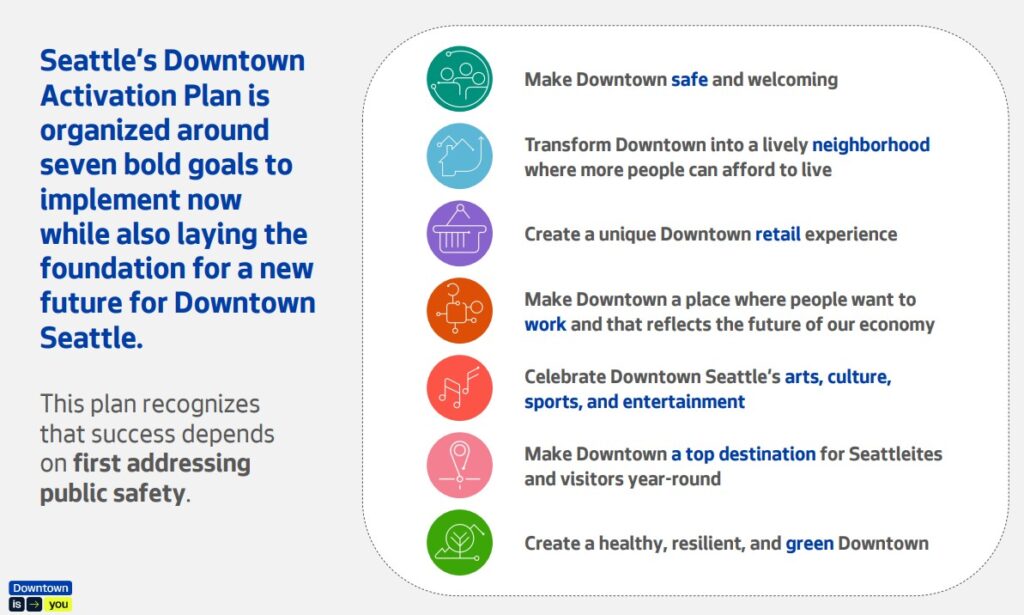
The symposium concluded with a second seminar specifically addressing Capital Interests, including Terplan, Lori Hill, an Executive Vice-President at Clise Properties, Andy Bench, a Managing Director at Wright Runstad & Company, and Rico Quirindongo, a Director at the Office of Planning and Community Development for the City of Seattle.
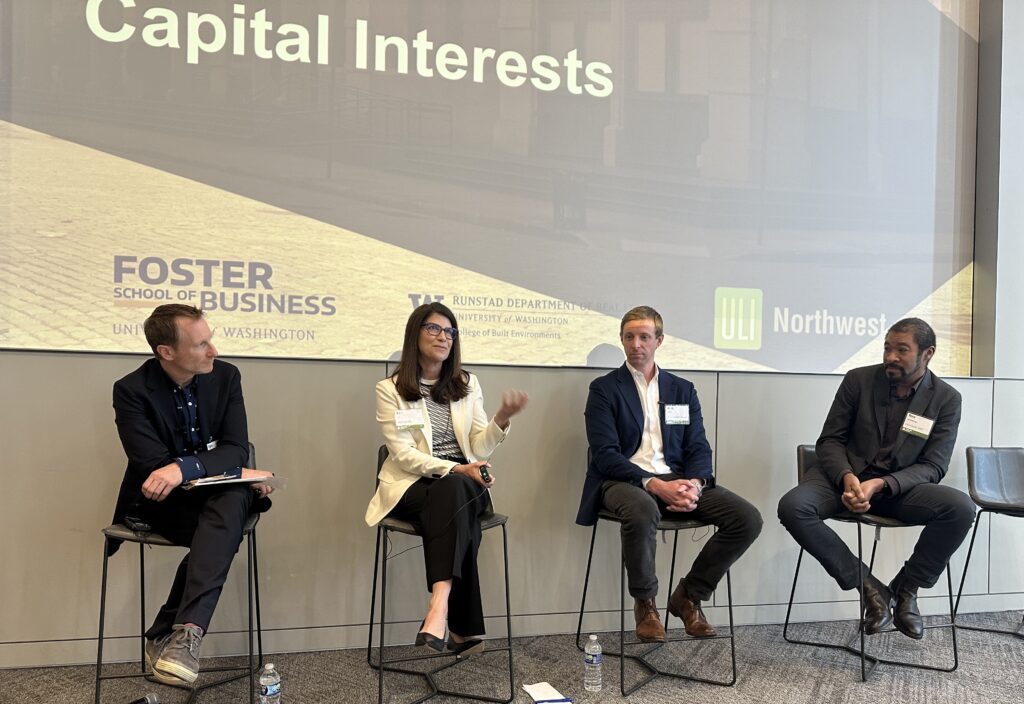
Hill and other panelists struck a realistic but optimistic tone, acknowledging that many property owners were underwater compared to their purchase price, and that hybrid work means that office demand will not recover to previous levels. That said, factors including the World Cup coming to Seattle in 2026 and potential sales of major properties downtown present reasons to be hopeful.
